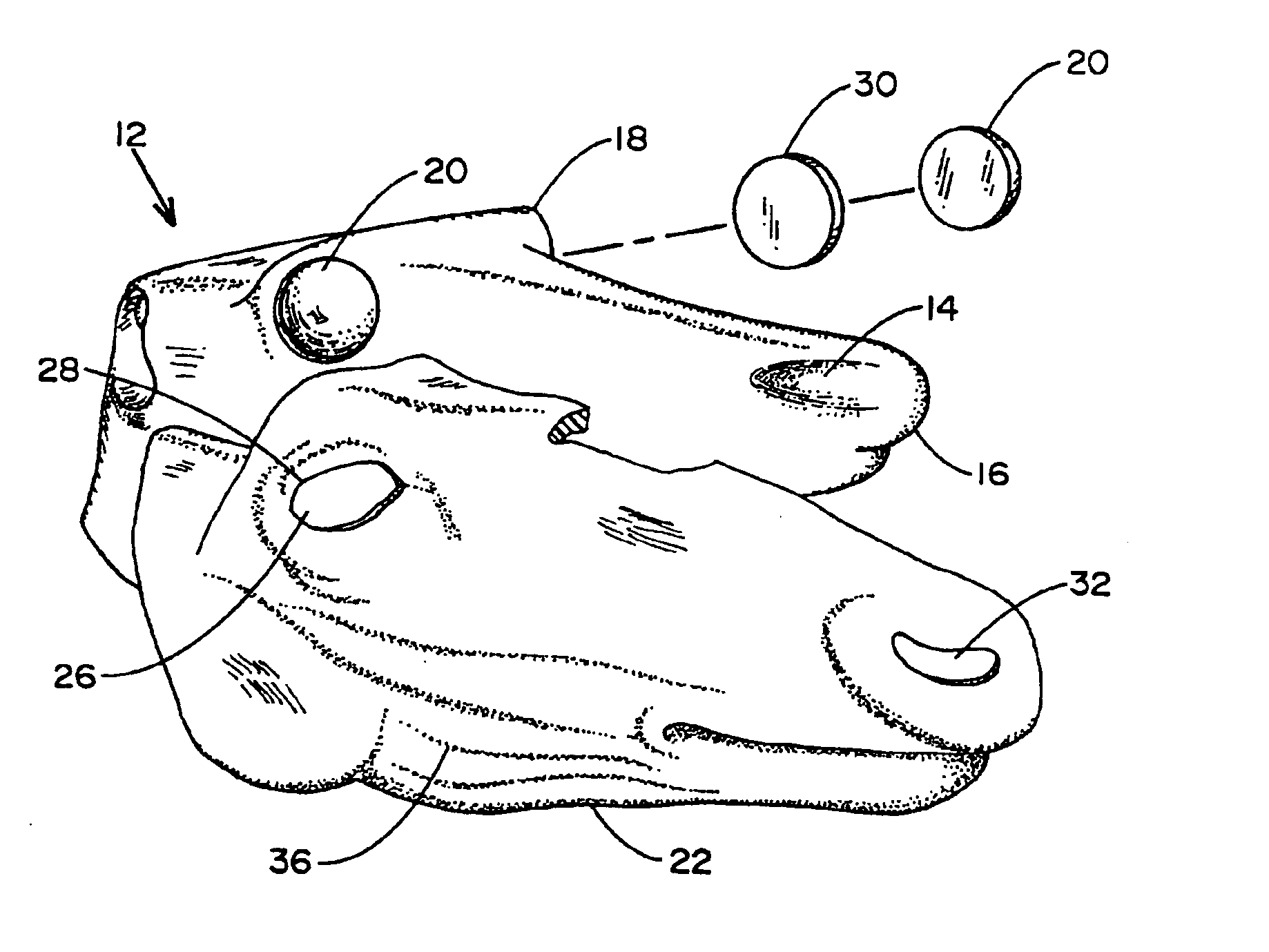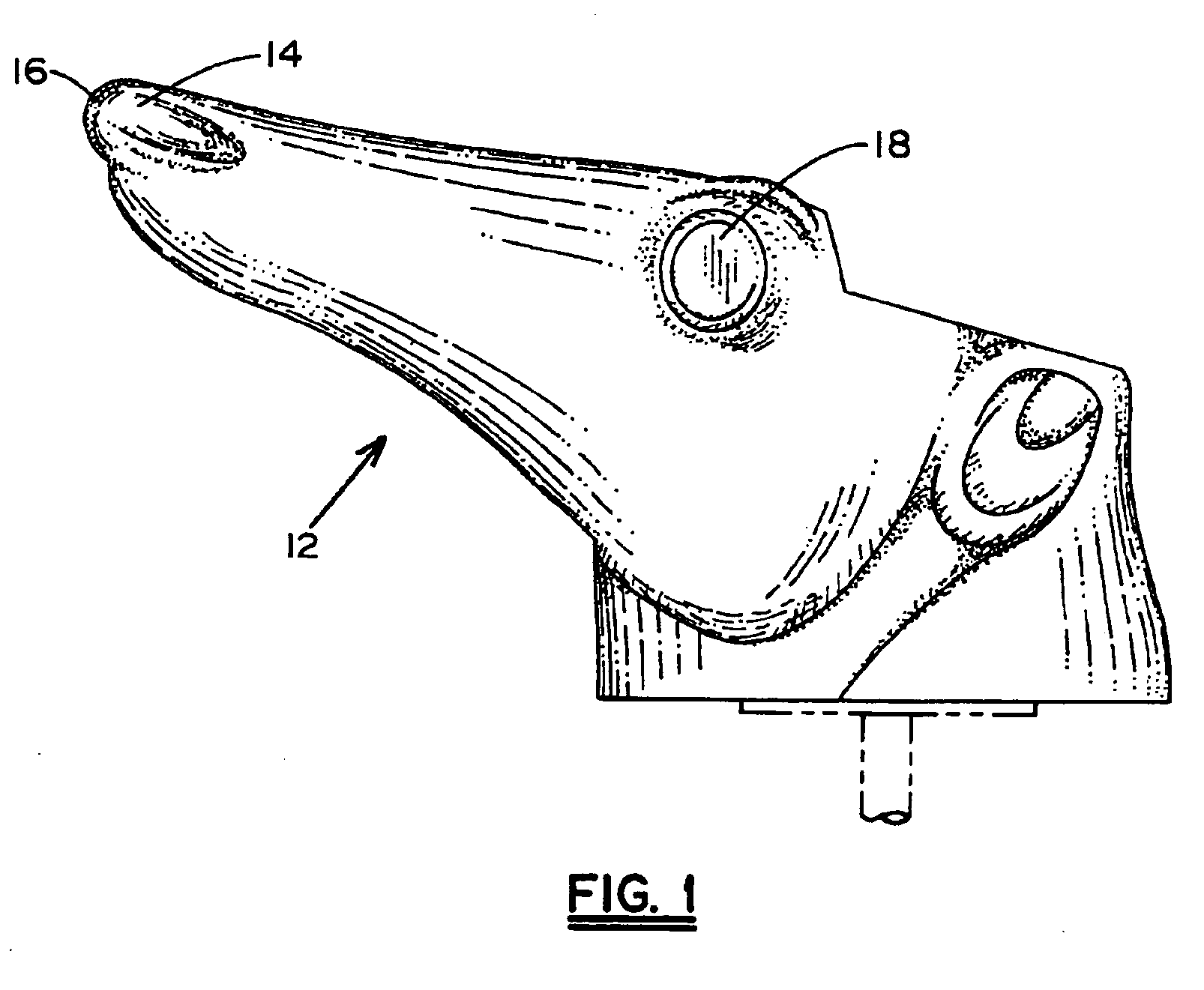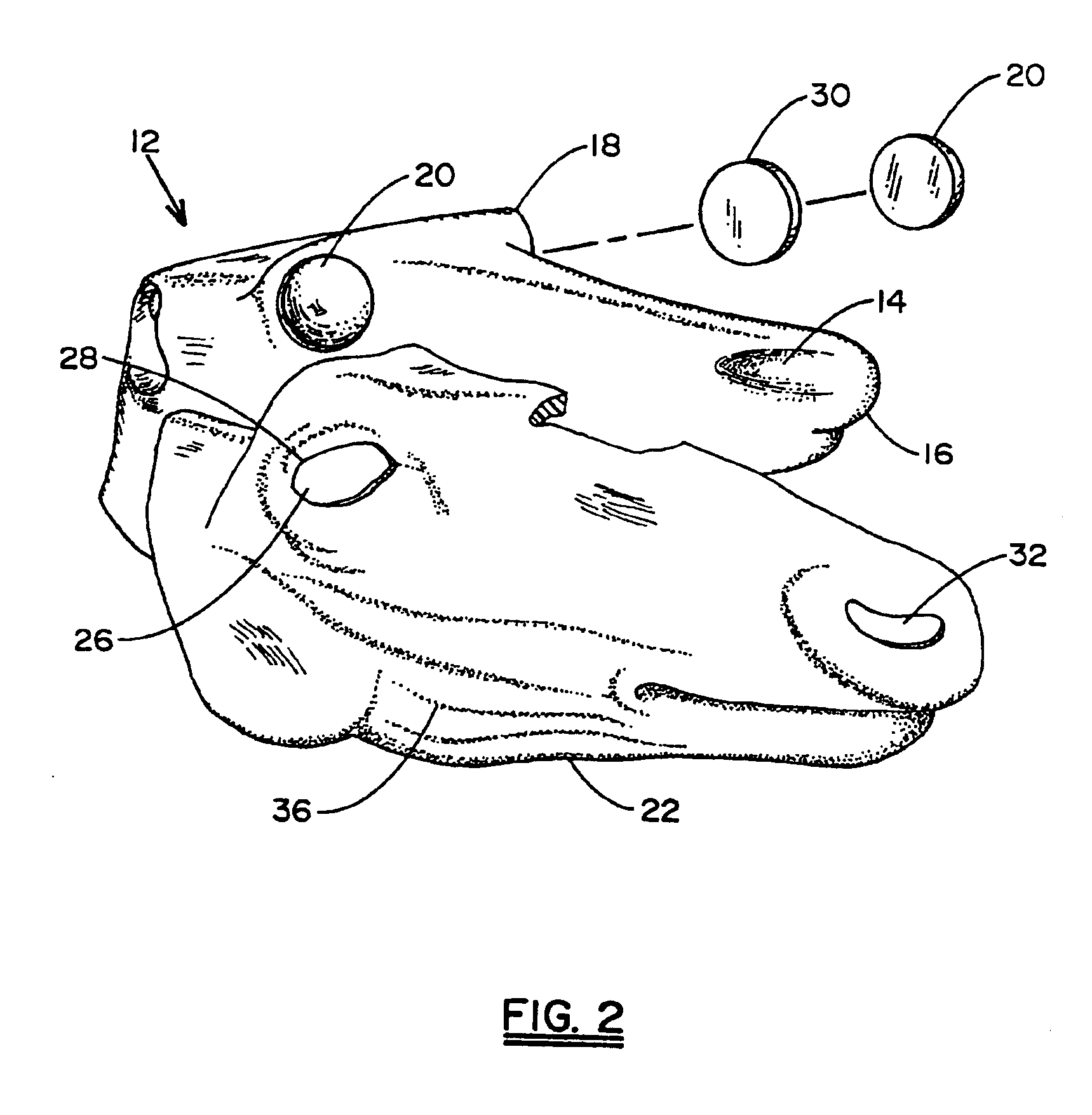Taxidermy form and method
a taxidermy and form technology, applied in the field of taxidermy, can solve the problems of difficult mastery, time-consuming and laborious, and one-piece forms, and achieve the effect of being easy to prepare and easy to prepar
- Summary
- Abstract
- Description
- Claims
- Application Information
AI Technical Summary
Benefits of technology
Problems solved by technology
Method used
Image
Examples
Embodiment Construction
[0018]Referring now to the drawings, in which like reference numerals refer to like parts throughout, there is seen in FIG. 1 a center core 12 of the present invention having a pair of nostril cavities 14, a nostril septum 16 which separates cavities 14, and a pair of anatomically correct eye sockets 18. Center core 12 may be formed by conventional molding processes from ordinary moldable substances, such as urethane foam. Nostril cavities 14, nostril septum 16, and eye sockets 18 are preformed into center core 12 during the molding process. As seen in FIG. 2, artificial eyeballs 20 are adhered to eye sockets 18 via a layer of an adhesive substance 30.
[0019]As seen in FIGS. 2 and 3, the present invention further comprises left and right face pieces 22 and 24, respectively, which are molded independently from common mold compounds, such as urethane foam, and are adapted for attachment to center core 12 in a covering relationship. The outer surfaces of face pieces 22 and 24 have sculp...
PUM
 Login to View More
Login to View More Abstract
Description
Claims
Application Information
 Login to View More
Login to View More - R&D
- Intellectual Property
- Life Sciences
- Materials
- Tech Scout
- Unparalleled Data Quality
- Higher Quality Content
- 60% Fewer Hallucinations
Browse by: Latest US Patents, China's latest patents, Technical Efficacy Thesaurus, Application Domain, Technology Topic, Popular Technical Reports.
© 2025 PatSnap. All rights reserved.Legal|Privacy policy|Modern Slavery Act Transparency Statement|Sitemap|About US| Contact US: help@patsnap.com



